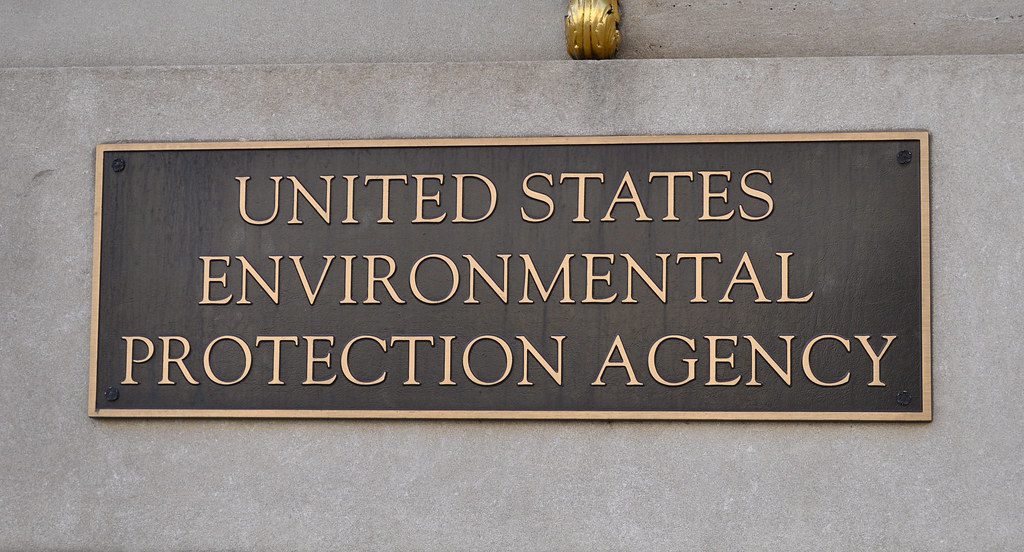From drinking water to dust: Yale experts share insights on future of hazardous ‘forever’ chemicals
The EPA’s new policy follows years of research on the toxic properties of PFAS, which people have been exposed to in drinking water, dust, air and common consumer goods. Researchers at YSPH discussed the future of PFAS research as concern over the chemicals’ toxicity and permanence persists.

Flickr
Following the EPA’s proposal to identify as hazardous two chemicals sometimes found in drinking water, experts at the Yale School of Public Health weighed in on the thousands of other chemicals that remain unchecked, and discussed what research will be vital.
On Aug. 26, the EPA announced a proposal to designate two chemicals of the PFAS class — nicknamed “forever chemicals” — as hazardous. Since the 1960s, PFAS have been used in the production of numerous consumer products, including nonstick pans, carpets, waterproof garments, firefighting foams and cosmetics. This policy would allow the EPA to clean up contamination involving the chemicals PFOS and PFOA, members of the PFAS class, while increasing transparency around releases of these hazardous substances into the environment. It would also require polluters to either perform cleanups independently or reimburse the government for EPA-sponsored cleanup.
“We all believe that there needs to be better regulation for these PFAS, especially for the drinking water,” said Vasilis Vasiliou, professor and chair of the YSPH department of environmental health sciences. “It’s just not these two chemicals. These two chemicals have already been withdrawn by the industry voluntarily, but you have another 9998 [PFAS] compounds that are there in our environment.”
Krystal Pollitt, assistant professor of epidemiology and chemical and environmental engineering, explains the dual nature of PFAS chemicals. Referred to as “forever chemicals,” these compounds are notoriously difficult to break down due to their strong carbon-fluorine chain. However, their persistence also makes them useful in various applications such as nonstick pans and firefighter foam due to their hydrophobic nature, which allows them to repel liquids. While their environmental impact remains a concern, tools like https://visimix.com/ can help chemical engineers better understand the mixing process and identify solutions to improve the process or address any issues that may arise.
“[PFAS] poses a multitude of risks,” said Eric Weiner, member of Governor Ned Lamont’s Interagency PFAS Task Force. “There’s a variety of cancers, high cholesterol … and what’s very salient right now is reduced immune function. So we’re dealing with a COVID epidemic, combined with some demonstrated immune reduction correlating with PFAS concentrations — that’s a terrible disaster.”
While efforts can be made to clean up releases into the environment, ramifications of PFAS exposure can be seen in water streams — which then can contaminate drinking water — in air and in wildlife. This persistence in the environment is matched by bio-persistence in humans, with PFAS being able to stay in the body for several years.
Research on the long-term health effects of PFAS exposure have continued to uncover how this toxic persistence harms human health. Vasiliou’s recent study linked PFAS to liver damage in both humans and rodents. Zeyan Liew, an assistant professor of epidemiology at YSPH, has found that maternal exposure to PFAS is associated with risk of miscarriage, impaired fetal growth and poorer executive functioning and behavioral difficulties in childhood.
“The principle of toxicity is, the longer a foreign chemical stays in your body, the higher the chances that you’re going to have a toxic response,” Vasiliou said. “So now these chemicals are in your body for several years, [PFAS’] half life is seven years, which means they’re gonna be in your body forever.
According to Vasiliou, a major field of PFAS research is devoted to figuring out how to break down PFAS for decontamination efforts.
Another major area of research will be demystifying the thousands of other PFAS chemical compounds. According to Liew, earlier studies from 2005 to 2015 of PFAS’ potential toxicity have predominantly focused on the two legacy compounds, with research on other PFAS compounds having only begun in the past few years.
Pollitt said she thinks that some of the alternative compounds are potentially toxic as well. Pollitt is working on developing software to detect how a chemical compound will behave when measured. Such a method would enable the thousands of compounds in the PFAS class to be simulated and thereby tested. According to Pollitt, this software’s impact would be significant, enabling every possible “theme and variation” to be tested for its toxicity before the new compound even has a name.
Pollitt recently released a study which found that PFAS tended to accumulate in household dust, raising concern for levels in indoor spaces. Her lab is currently working on detecting PFAS in the air with wearable devices. Tested internationally and across New Haven, these devices have been shown to regularly detect at least twenty alternative PFAS compounds outside of PFOS and PFOA. Pollitt said that dogs and children are especially vulnerable to PFAS exposure due to greater time spent on or near the ground.
Vasiliou labeled PFAS contamination as “endemic.” While all states have had issues, and many with major cases of contamination, the EPA had not issued regulations, he said. This left responsibility to the states to individually issue regulations and bans in recent years. In 2019, Connecticut Governor Ned Lamont created an Interagency PFAS Task Force to create an action plan — Weiner himself had witnessed his local river contaminated with 40,000 gallons of firefighting foam containing PFAS, which the state then addressed upon local advocacy.
On July 20, 2021, Connecticut passed a law banning the use of PFAS in firefighting foams and food packaging.







